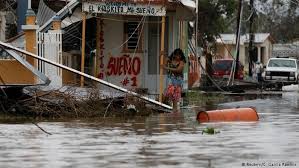
Five Practical Ways to Protect Yourself from the Dangers of Flooding
There are numerous examples of significant flooding caused by troughs, storms or hurricanes. Persistent troughs or storms with a slow forward motion are the most dangerous as heavy rains persist for a longer period of time.
To protect yourself in case of floods you must:
- Protect Your Personal Documents and Special Items
- Store valuables in plastic tubs with locking tops.
- In case of evacuation, you should be able to secure and move all your valuables within 15 minutes.
- Buy Flood Insurance: A Plan for Replaceable Items - The National Flood Insurance Program (NFIP) is available from an insurance agent or the NFIP. There will be a 30 day waiting period before policy goes into effect so the time to buy is before hurricane season. For more information see www.floodsmart.gov.
- Flood Proof Your Home - Take Steps to Minimize Flood Damage
- Shut off the main circuit breaker to prevent short circuiting and eliminate the threat of electrocution.
- Rise outside air conditioning units onto platforms above ground level.
- Store rarely used or expensive items in the attic or on high shelves.
- Develop a Family Flood Plan
- Develop a plan of action to keep from panicking during an emergency.
- Have an evacuation route and alternatives planned in the event you are asked to evacuate.
- Communicate your plans with friends or family outside of your home area.
- Know your risk. Is your home, business or school in a floodplain? Where is water likely to collect on the roadways you most often travel? What is the fastest way to get to higher ground? Knowing the answers to these questions ahead of time can save your life.
- Never Drive on Flooded Roads
- Driving into flooded roadways puts your life and the lives of others at risk.
- Unless you are in a flood plain and flood waters threaten you directly, you are probably safest staying at your current location and off the roadways.
- If you encounter flood waters when driving, Turn Around, Don’t Drown!
Source: Weather.gov - Hurricane Guide 2015

